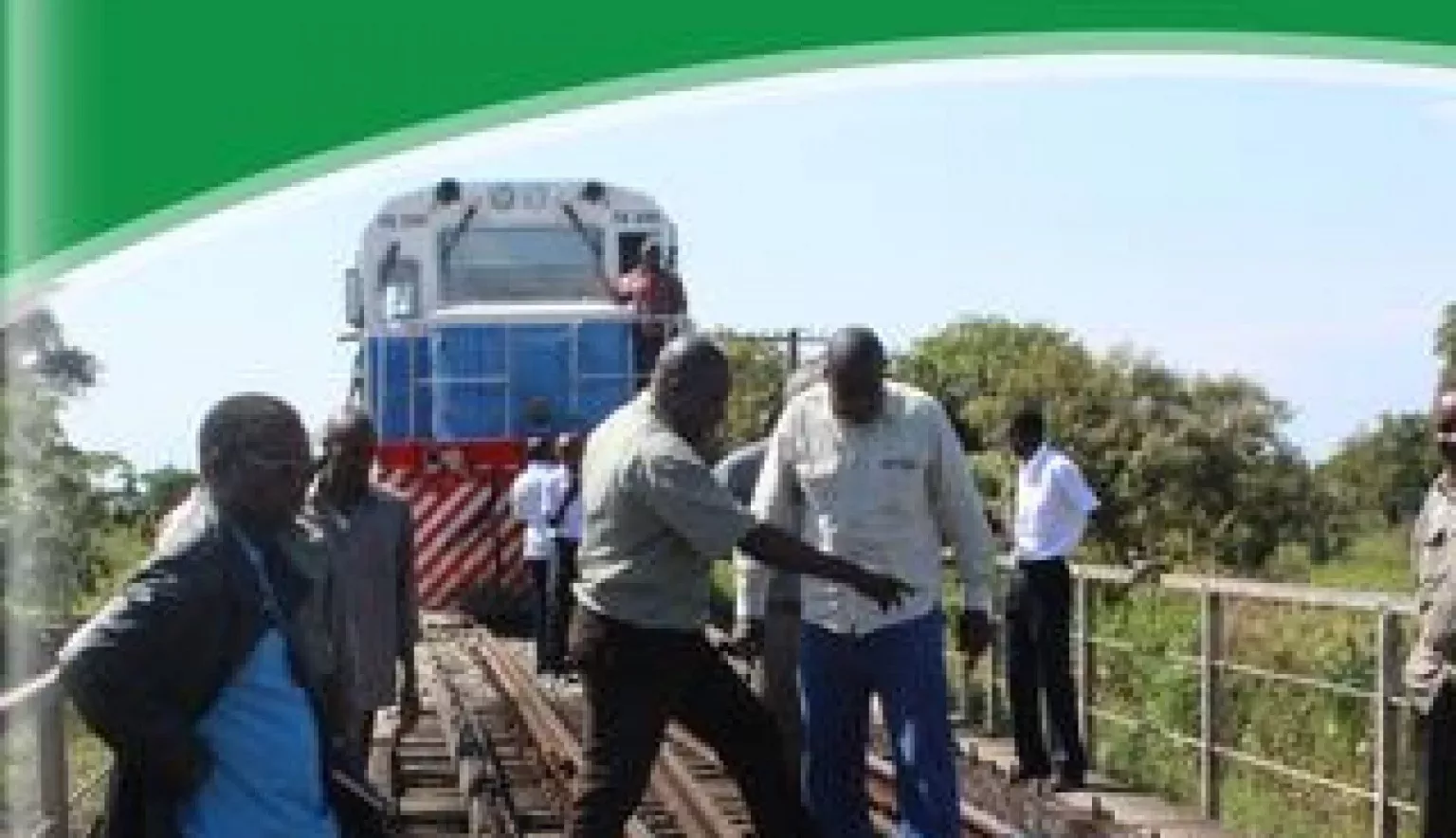The new Managing Director at TAZARA will be the driver behind a restructure that will reposition the organisation as a market-driven commercial business known for excelling in the execution of the movement of traffic.
REHABILITATING A TRANSPORT LIFELINE
Tanzania-Zambia Railway Authority (TAZARA) is woven into Africa’s history books as a transport lifeline able to navigate the often topographically challenging terrain between Tanzania and Zambia. Having commenced construction in October, 1970 with assistance from the Chinese Government, the finished track covering a distance of more than 1,800 kilometres now connects Dar es Salaam to Kapiri Mposhi in Zambia; providing strategic links to the nearest port for Zambia’s copper and mineral exports. Over the years the line has proven important in the transportation of other goods such as maize and fertilisers, while also helping to link the hinterlands in the Northern Province of Zambia with the northeast of Tanzania; where passenger rail services had previously been absent.
“It is not easy to fathom the extent of heroism and ingenuity displayed by both the Chinese people, represented by their great engineers and workers and the Tanzanian and Zambian people, who joined the Chinese for the construction of this unique railway at the time,” recalls TAZARA’s new Managing Director (MD), Bruno Tandeo Ching’andu, who was appointed in April, 2016. “The hostile environment, through which the line often had to pass, did not deter them. Almost 89 million cubic metres of earth and rock had to be moved, 320 bridges, 22 tunnels and 2,225 culverts were built. The line was finally completed two years ahead of schedule in June, 1975 and was officially inaugurated after trial operations a year later.”
Recognising the revitalisation efforts now required to restore the railway to its former glory, the new Managing Director is hoping to restructure the organisation – with the help of an outsourced consultancy company – in order to improve efficiencies and transform the traditionally politically-charged mindset of TAZARA’s 50-50 Government shareholders into a commercially-run attractive business proposition.
“There have been a lot of changes since I joined the organisation. We are actively looking for people to help us with our restructure in order to position TAZARA – also referred to as ‘Uhuru Rail’ – as a market-driven commercial business; known for excelling in the execution of the movement of traffic. In this regard, we have already reduced the transit time of cargo to Dar es Salaam, which has left our current customers incredibly pleased,” Ching’andu says.
“If we can continue making these adjustments to improve our line, then we hope to attract more attention from other markets, such as general goods markets. We are already in talks with major logistics companies and hope to prove we have what it takes to grow into new segments.”
REHABILITATION
A challenge felt across the continent is the amount of congestion on the roads as well as gaps in road infrastructure making it difficult to transport from A to B. This is no different in Zambia and Tanzania where TAZARA strives to capitalise on the need to remove traffic from the limited roads links and make the transition to rail.
However, road infrastructures are improving, giving customers more choices for moving their cargo than they have had in the past. We know we are the answer, but we just need to make sure we can fulfil each customer’s requirements to their satisfaction before accepting new cargo opportunities,” he summarises.
Thanks to the 15th Protocol in the form of an interest-free loan from the Chinese Government, TAZARA has received four new locomotives, two rescue rail cranes and a large number of materials for track maintenance to help achieve its vision of becoming the preferred transport organisation in the sub-region.
Additionally, the organisation will now be actively involved in ferrying exports and imports from the DRC under a new agreement that will see locomotives from the latter country transport goods to the Zambian border at Sakania, then make their way to a Zambia Railways locomotive.
“This trickle of investment is a good start, but we are now looking for capital to invest in new equipment and materials for the rehabilitation of the track and communications systems to increase our efficiency and output,” says Ching’andu. “Recapitalisation is essential at this time to strengthen our position, and ensure the provision of a reliable and quality transport service.”
With the right capital in place, TAZARA’s vision over the next three-five years is to make the improvements required to remove speed restrictions with the hopes to move cargo along the track at a minimum of 100 kilometres per hour while having a better grasp on traffic monitoring through modern communication systems that enable continuous remote control.
“Over the same period, we strive to have 80 locomotives available to cope with the expected increase in demand for our services,” the MD highlights.
A FANTASTIC OPPORTUNITY
An increase in the use of technology to support the efficient transportation of cargo will also require expertise to be brought in as part of a skills transfer activity to enhance TAZARA’s internal processes. “Local training is something we are a strong advocate of. Right now, we are looking at ways to bring in expatriates to impart the skills required onto a streamlined workforce to improve our customer service,” Ching’andu comments.
He concludes: “Above all else, TAZARA is an important corridor in the SADC region that enables transport to the port from Zambia, the DRC, as well as products going to the Great Lakes in Burundi and Rwanda. We are the one Company that can help develop the area in which the line passes as there is very little other transport infrastructure in the area. In the long-term, the terrain poses fantastic opportunities for agriculture and other business segments, and we want to be the engine for economic development in the region.”































